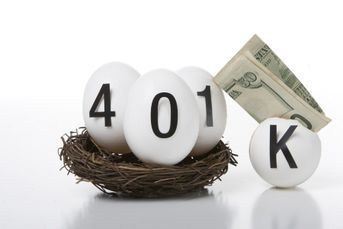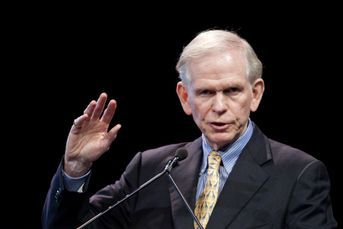Investors growing blase about risk: Fed governors’ big worry
June FOMC meeting minutes shows policy makers on watch for too much risk taking, examine QE exit plan.
Some Federal Reserve policy makers were concerned investors may be growing too complacent about the economic outlook and the central bank should be on the lookout for excessive risk-taking, minutes of their June meeting show.
“Signs of increased risk-taking were viewed by some participants as an indication that market participants were not factoring in sufficient uncertainty about the path of the economy and monetary policy,” the minutes showed.
Fed officials expressed concern about low volatility in equity, currency and fixed-income markets. At the same time, “it was noted that monetary policy needed to continue to promote the favorable financial conditions required to support the economic expansion,” according to the minutes of the June 17-18 Federal Open Market Committee meeting released Wednesday in Washington.
(Related: Yellen’s economy echoes Arthur Burns’ more than Greenspan’s)
Stocks extended rose after the minutes were released. By the end of the day, the Standard & Poor’s 500 Index climbed 0.46% to 1,972.83. The yield on the 10-year Treasury note fell one basis point, or 0.01 percentage point, to 2.55%.
MARKET MONITORING
Officials agreed they must monitor markets for signs of froth and said that if necessary, supervisory measures should be used to “address excessive risk-taking and associated financial imbalances.”
The minutes offered no new clues on the timing of an interest-rate increase, with officials saying policy depends most “on the evolution of the economic outlook.”
“The Fed is still the investor’s friend, not something to be feared,” said Brian Jacobsen, who helps oversee $231 billion as chief portfolio strategist at Wells Fargo Advantage Funds in Menomonee Falls, Wis. “Where there are bubbles, the Fed will use its role as a regulator and supervisor to address those problems. It will not use monetary policy.”
Central bankers also continued discussions of a strategy for the eventual exit from unprecedented monetary easing. “It was observed that it would be useful for the committee to develop and communicate its plans to the public later this year, well before the first steps in normalizing policy become appropriate.”
EXIT PLANS
“With the labor market improving and the inflation data tilting higher, Fed officials feel some pressure to express a coherent exit strategy, even though many would agree that we’re still far away,” said Dana Saporta, a U.S. economist at Credit Suisse Group AG in New York.
Many participants agreed that it “would be best” for the Fed to end reinvestment of maturing securities only when it raises rates for the first time since 2006, or even afterward. Most preferred to end after.
Fed officials are closing in on their goal of full employment faster than they had forecast, forcing them to consider accelerating their first increase in the main interest rate in eight years. The Fed has said rates are likely to remain low for a “considerable time” after it ends large scale asset purchases that are set to wind down by year end.
Fed officials said in a statement after the June gathering that the economy is rebounding and will continue to expand at a moderate pace.
Fed Chair Janet Yellen repeated at her press conference after the meeting that the Fed is likely to “reduce the pace of asset purchases in further measured steps.” Bond buying has boosted the central bank’s balance sheet to a record $4.38 trillion.
Better-than-expected employment data are bringing forward expectations for higher rates. Unemployment fell to an almost six-year low last month, strengthening the case for officials to raise the main rate earlier than they had forecast.
Payrolls surged in June by 288,000 workers, according to a Labor Department report released last week. The jobless rate fell to 6.1%, a level that policy makers didn’t expect to see before the end of the year.
Fed officials predicted at their June meeting that unemployment would decline to 6% to 6.1% by the end of this year. It was 6.3% in April and May.
LIFTOFF TIMING
Central bankers last month also raised their forecasts for interest-rate increases. They estimated the main rate will be 1.13% at the end of 2015 and 2.5% a year later. In March, they forecast 1% at the end of next year and 2.25% in 2016.
Michael Feroli, chief U.S. economist at JPMorgan Chase & Co. in New York, pulled forward his forecast for Fed tightening by one quarter, to the third quarter of 2015, after the jobs report. Chris Rupkey of Bank of Tokyo-Mitsubishi UFJ Ltd. now expects the first rate increase next March instead of June.
St. Louis Fed President James Bullard said June 26 he favors raising the benchmark rate in the first quarter. “The economy could tolerate at least a little bit of the central bank getting back to a more normal stance,” Mr. Bullard, who doesn’t vote on policy this year, said in New York.
U.S. job gains have averaged 231,000 a month in the first half of 2014. If that pace is sustained, employment will rise by 2.78 million this year, which would be the biggest annual gain since 1999.
“The numbers are getting better and better,” said Bluford Putnam, chief economist at CME Group Inc., the Chicago-based owner of the world’s largest futures market, and a former Federal Reserve Bank of New York economist. “There are some issues here and there but everything that’s going is typical of an expanding economy.”
Other labor-market gauges watched by Ms. Yellen are showing continued weakness. The participation rate, the share of working-age people in the labor force, held at 62.8% last month, matching the lowest since March 1978. Among the unemployed, 32.8% have been out of work for six months or more.
Inflation is also showing signs of picking up. The Fed’s preferred gauge was up 1.8% from a year earlier in May, the biggest 12-month increase since October 2012. It has been below the Fed’s 2% goal for two years.
Ms. Yellen is scheduled to deliver her semiannual testimony to lawmakers next week, appearing before the Senate Banking Committee on July 15 and the House Committee on Financial Services the next day.
(Bloomberg News)
Learn more about reprints and licensing for this article.








